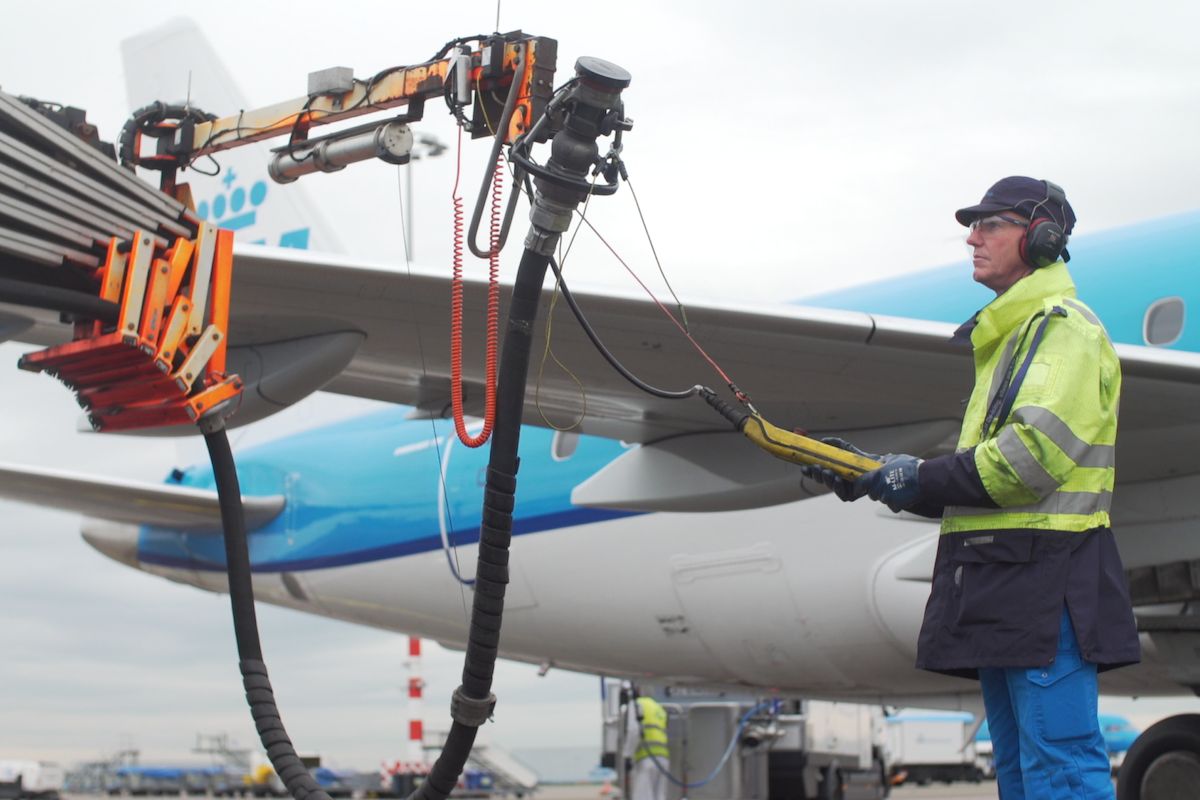Sustainable aviation fuel (SAF) is a hotly debated topic within an aviation industry grappling with a monumental decarbonization challenge.
Currently, sustainable aviation fuel accounts for only 0.3% of global jet fuel usage, with projections indicating a modest increase to 0.7% by 2025.
Yet the goals are ambitious. The U.S. Department of Energy’s Sustainable Aviation Fuel Grand Challenge aims for 3 billion gallons of annual SAF production by 2030, which would cover 10% of U.S. jet fuel demand. By 2050, it hopes for 35 billion gallons – that’s 100% of demand.
There is mounting resistance to these lofty targets. AirAsia co-founder Tony Fernandes was particularly blunt in his criticism of sustainable aviation fuel at the Skift Global Forum East conference in November: “I think sustainable aviation fuel is stupid. I think it makes absolutely no sense at all because there is not enough cooking oil in the world to fill the planes. Putting 1% or 2% of cooking oil into your plane is not going to change global warming.”
Our latest Fact From Fiction entry delves into the controversies around alternative fuel adoption and whether it actually represents a viable pathway for decarbonization. One thing is clear, there is an increasing resistance to that claim.
First Generation Sustainable Aviation Fuel Comes with Potential Risks
Sustainable aviation fuel is broken down into three “generations,” based on the relative availability of the technology and also its long-term sustainability.
First-generation sustainable aviation fuel relies on monoculture crops and used cooking oils, which are controversial due to their potential negative climate impact. The issue is growing the necessary amount of crops, such as corn: It may require forest clearance and thus destroy a natural means of absorbing carbon.
No wonder there’s so much pushback.
David Neeleman, Chairman of Azul Brazilian Airlines and CEO of Breeze Airways, is another critic of the sustainable aviation fuel agenda:
“By the time you use the fertilizer to plant, which is made from petroleum products, you use the harvesting equipment, the transportation, the energy to produce it, the energy to get into the airplanes, you’re really not saving anything,” he said in an interview with Skift Research. “You’re just basically creating a fuel that’s six times more expensive or eight times more expensive than what we’re paying today. Much better and more efficient to take 5 billion or 10 billion and offer $20,000 to every trucker to electrify.”
Another source of first-generation sustainable fuels is used cooking oil, which might sound beneficial since it’s reusing something that would otherwise go to waste. But it is highly dependent on imports from countries such as Indonesia, Malaysia, and China. That creates a carbon-intensive supply chain and makes the origin of the fuel harder to track. The risk is that it could come from other controversial monoculture sources, such as palm oil.
Third-generation sustainable fuels are more promising because they do not rely on crop sources or imported cooking oils. But these require significant technological advancements and infrastructure overhauls, which means they are unlikely to be available affordably and at scale for decades.
SAF is a Financial as Well as Technological Challenge
SAF is considerably more expensive than conventional jet fuel and airlines operate on slim margins while supporting large workforces. It’s unrealistic to expect them to absorb a sudden and massive increase in fuel, their biggest operating cost.
According to Shashank Nigam, CEO of Simpliflying, during an interview with Skift Research, “About 30–40% of airlines’ costs today are jet fuel. You can’t double their fares tomorrow. And that’s just for generation-one SAF. There is no way that an airline can have an economically sustainable business and try to be environmentally sustainable — the economic sustainability has to come first, and that is something that investors, producers and governments need to recognize.”
We Can’t Wait for the Perfect Solution but we Should Be Questioning the Current Ones
Given all the logistical and financial challenges with scaling sustainable aviation, as well as some of the environmental concerns about early-generation sustainable aviation fuels, it is tempting to just wait for better options.
But the aviation industry has to start somewhere, even if the available solutions aren’t yet perfect.
The mounting resistance to SAF is not without merit and the critical voices need to be heard if the industry as whole is to cooperate towards genuine solutions. Advocates of SAF will need to reckon with these concerns and demonstrate that it represents a viable pathway and that the purported negative consequences of it are overblown. But the fact is, they have a growing number of people to convince.
Sustainable Aviation Fuel: Fact From Fiction – Skift Research

